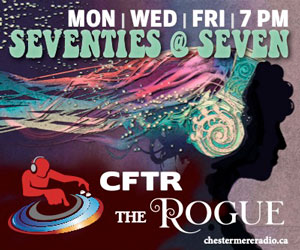In the last article, we examined frankincense and the interesting cultural, biological, and historical associations with this product. This week we look at myrrh, another sap compound whose usage dates back to 5000 years ago.
Like frankincense, myrrh is a plant derivative. Heralding from the thorny, shrub-like trees commiphora abyssinica, commiphora myrrha, and commiphora giliadensis, myrrh has traditionally been harvested from the abundant stands of these plants located in Northern Africa, the Arabian Peninsula, and the Eastern Mediterranean. The oleoresin (read: part essential oil, part resin) is produced by allowing the tree to bleed through cuts made to its bark. The sap that the tree exudes hardens over a period of a few weeks; it is then pried from the bark and taken to market for sale. Highly valued myrrh is very opaque and scented while lesser-prized myrrh tends to be somewhat translucent and accordingly less fragrant.
So what makes myrrh such an interesting and once-coveted material? With ancient records first detailing usage of this substance by Middle Eastern civilizations as long as 5000 years ago, myrrh was a mainstay in Middle Eastern culture for the next four millennia. Myrrh trade routes extended throughout the Middle East and were influential politically and economically. So highly prized was this substance, in fact, that ounce per ounce, it was worth more than gold; the reasons for this can be divided into two streams of thought, most importantly in the cultural and medical realms.
Culturally, myrrh was paramount to several groups. Many sects used the compound to embalm corpses. Egyptians burned it as a room decontaminant (to get rid of fleas). The Jewish tradition used myrrh oil to anoint religious paraphernalia in the temple as well as to purify women prior to marriage. The Jewish authorities also added myrrh to wine that was given to prisoners sentenced to death (whether to induce delirium or simply enhance the taste of the wine is unknown.) Early Christianity details the story of the three wise men offering baby Jesus a gift of myrrh
Medicinally, myrrh was used widely as a treatment for a variety of ailments. Most Middle Eastern cultures, in particular those that followed Ayurvedic traditions, used the oleoresin to treat mouth ulcers and skin wounds, With expanding trade routes resulting from increased means of transportation, even Chinese medicine embraced the fragrant sap compound by the 7th Century AD, using it to relieve symptoms associated with hemorrhoids, poor circulation, diabetes, and various female complaints such as premenstrual syndrome. Myrrh made its way to North America in the latter half of the 1600’s with the then-revered Samuel Thompson (author of German Pharmacopeia) proclaiming that its tincture was more effective than mercury.
Even today we see that myrrh is readily available in several, over-the counter products. In addition to incense, myrrh can be found in various brands of mouthwash, toothpaste, anti-inflammatory cream, and other antiseptics. According to The Illustrated Encyclopedia of Essential Oils by Julia Lawless, “common myrrh essential oil is antiseptic, astringent, anti-inflammatory, expectorant, balsamic, sedative, tonic, stimulant, carminative, and an emmenagogue.” Wikipedia even lists several contemporary uses for the product, “In HYPERLINK “http://en.wikipedia.org/wiki/Pharmacy” \o “Pharmacy” pharmacy, myrrh is used as an antiseptic in mouthwashes, gargles, and toothpastes for prevention and treatment of gum disease. Myrrh is currently used in liniments and healing salves that may be applied to abrasions and other minor skin ailments. Myrrh has also been recommended as an analgesic for toothaches, and can be used in liniment for bruises, aches, and sprains.”
Overall, myrrh is as interesting, pertinent, and remarkable as frankincense. Cultures utilizing this oleoresin over the millenia incorporated the once-ubervaluable commodity into all aspects of their lives, including religious, medical, and aesthetic. Modern usages of myrrh, while aligning with traditional medical methodology, have further added contemporary science to the mix, drilling down on the most effective and medicinal properties of the substance. With such a notable history and an equally bright future, there can be little doubt that this amazing plant product will see itself in the limelight several times in the millenia to come.






